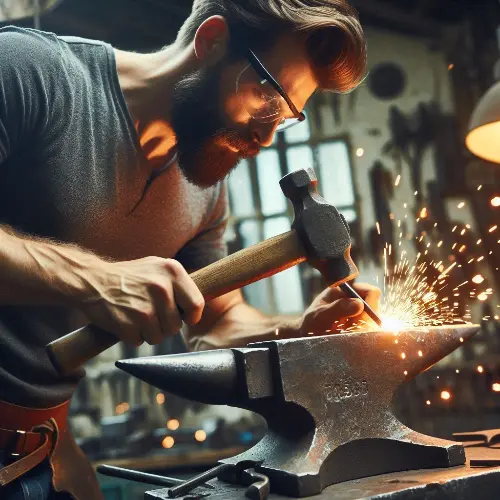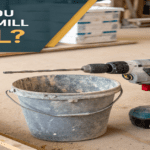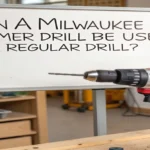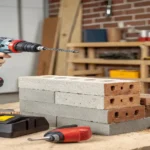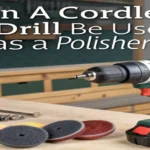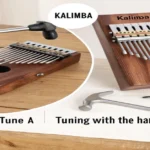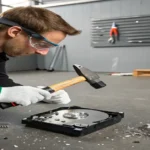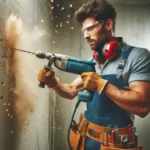Which Hammer is Used in Sheet Metal Work
Metalworkers master the art of hammering sheet metal into a variety of shapes and forms. But with so many hammers available what solves one s problem on a sheet metal project which hammer in fact what hammer do you need?
If you want to know about the types of hammers and how to use them in sheet metal, this guide is related to you!! Learn what different metal shaping hammers do; then, go ahead and choose the right hammer for your job with confidence.
What is a Peen Hammer and When is it Used?
One of the most popular hammers for sheet metal work is the peen hammer, also known as a ball peen hammer. It has a flat face on one side and a rounded peen on the other.
The flat face is used for general striking purposes while the peen allows for shaping curves and rounding off edges.
Peen hammers come in different weights from 12 oz to 32 oz. Heavier hammers around 20-32 oz are best for sheet metal work as they provide enough controlled force.
Use the flat end to flatten or straighten the metal and the peen end for smoothing rivets or curving metal gradually.
Why Use a Planishing Hammer for Metal Shaping?
Planishing hammers have a flat face on both sides to allow for smoothing and finishing of metal surfaces. The flat ends even out hammer marks and allow for gentle shaping without marring the metal.
Planishing hammers are commonly used after other hammers have done the initial shaping. The smooth face will refine the form and polish the surface.
These hammers come in different weights from 12 oz to 48 oz. Light planishing hammers under 16 oz are used for final finishing while heavier ones add more power for broader smoothing.
Use lighter taps with a planishing hammer to gently work the metal.
When is a Mallet Hammer Better than a Metal Hammer?
Mallets have heads made of wood, plastic, or rawhide rather than metal. They provide a gentler strike and minimize the risk of marking or denting the metal surface.
Rawhide mallets are a popular choice as the soft rawhide conforms to the metal for more control.
Mallets excel at gradually shaping sheet metal through repeated tapping. They allow you to shape metal over forms or stakes without marring the surface.
Use a mallet in combination with a metal hammer. Use the mallet for initial shaping then refine with a metal hammer.
How Can a Riveting Hammer Help with Sheet Metal Projects?
Riveting hammers have a shape designed specifically for setting rivets. They have a flat face opposite a riveting head that is shaped to grip around rivet heads. The riveting end flares out the rivet tails and ensures even spreading.
These specialized hammers provide excellent control and accuracy when installing rivets to join sheet metal pieces.
The flared end is precision machined to fold over and flare rivet ends smoothly and evenly.
Always use a riveting hammer when setting rivets in sheet metal to avoid deforming the rivet head.
Why Use a Cross Peen Hammer?
Cross peen hammers have a flat face opposite a wedge-shaped peen that runs perpendicular to the handle rather than parallel.
The cross peen allows you to work metal in tighter spaces that a regular ball peen would not fit.
The cross-peen shape also provides more concentrated force when drawing out metal into shapes.
The focused wedge concentrates the hammering force to a smaller area. Use the cross peen for shaping metal in confined areas or when you need to direct force to a precise point.
When Would a Chasing Hammer Work Best?
Chasing hammers have a flat, square face on one end and a ball or cross peen on the other end. The flat end has slightly rounded corners so hammer marks do not imprint on the metal.
Chasing hammers allow for shaping metal against stakes and forms without marring the surface. The flat face can access tight spaces and angles where a rounded hammerhead would not fit.
The combination of flat and peen ends provides versatility. Use chasing hammers when working metal against stakes and during detailing work where you need to avoid noticeable hammer marks.
Why Use an Embossing Hammer for Decorative Effects?
Embossing hammers have a variety of shaped ends such as round ball, square, wedge, dome, or curved that transfer the shape to the metal through hammering.
Different hammer end shapes create different embossed designs. Embossing hammers are used to create decorative textures and patterns in sheet metal.
The raised shape stands out from the surrounding metal, adding beautiful detail. Use embossing hammers when you want to enhance flat sheet metal with decorative dimensional effects.
What Type of Hammer is Used for Raising?
Raising hammersA large domed-headed hammer used with raising stakes to shape sheet metal into 3-dimensional forms.
With a domed end, you can work the metal over the rounded stake to address the piece at different angles as you shape it into something with depth.
Raising needs heavy hammers with bigger dome radii to properly stretch and shape the metal between the stakes.
Using a normal flat-face hammer would only translate damage to the workpiece, as raising hammers are designed specifically for depth forming and the proper shaping of the metal.
In Summary:
- Peen hammers with flat and rounded ends are versatile for general shaping. Go with heavier 20-32 oz weights for sheet metal work.
- Planishing hammers have flat faces to smooth and finish metal surfaces without marring. Use lighter 12-16 oz hammers for final polishing.
- Mallets of wood, plastic, or rawhide gently shape metal and avoid denting. Rawhide is preferred for its soft conforming face.
- Riveting hammers flare rivet ends evenly when installing rivets in sheet metal. The shaped head grips rivet securely.
- Cross-peen hammers concentrate force on a small area with its wedge peen. Useful in tight spaces.
- Chasing hammers have a flat face to avoid marks while shaping metal against stakes.
- Embossing hammers imprint decorative patterns using shaped ends like balls, domes, etc.
- Raising hammers with large domed heads shape metal with depth as it is formed over stakes.
Knowing the features and purposes of hammers for sheet metal work will help guide you in choosing the right hammer.
Match your hammer to the specific technique and task at hand. With practice and the properly equipped toolbox, you’ll be shaping metal like a pro in no time!
FAQs
What weight of hammer should I use for sheet metal work?
For general sheet metal shaping, a 20-32 oz ball peen or cross peen hammer will provide enough controlled striking force without being too heavy. Avoid very light hammers under 16oz that lack the power to shape metal.
Question: Can I use a standard claw hammer?
You do not want a simple claw hammer. Claw would be useless for metal shaping and the other side is a flat face that you can never use to smooth or finish metal. Choose a ball peen, cross peen, or some other metalworking hammer.
Is my hammer shiny or peened?
Polished hammer faces smooth out metal with less friction or marking. Textured faces help to grip the metal, and slide the hammer face over the metal less. Pick one after trying them both,
Conclusion
This is a broad overview — I hope this has given you a better understanding of the types of hammers that work best for forming sheet families!
With so much available, it might take a while before you learn what you like. The correct hammer definitely makes it much easier! Feel free to let me know if you have any questions.

I’m Ian Welkins, a seasoned professional in the tools industry. My passion drives me to share valuable insights on hammers, drills, and industrial tools. With years of experience, I’m your trusted source for expert advice on the best tools for every job.
